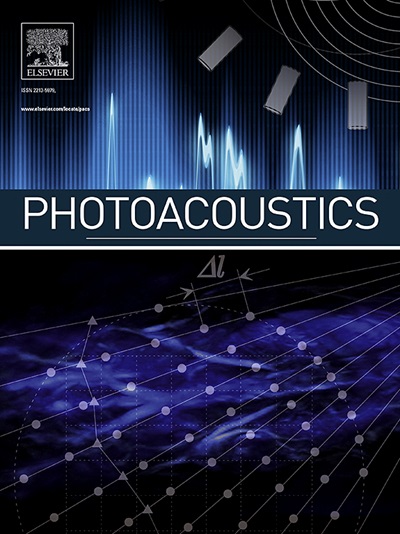Scale-equivariant deep model-based optoacoustic image reconstruction
IF 7.1
1区 医学
Q1 ENGINEERING, BIOMEDICAL
引用次数: 0
Abstract
Model-based reconstruction provides state-of-the-art image quality for multispectral optoacoustic tomography. However, optimal regularization of in vivo data necessitates scan-specific adjustments of the regularization strength to compensate for fluctuations of the signal magnitudes between different sinograms. Magnitude fluctuations within in vivo data also pose a challenge for supervised deep learning of a model-based reconstruction operator, as training data must cover the complete range of expected signal magnitudes. In this work, we derive a scale-equivariant model-based reconstruction operator that i) automatically adjusts the regularization strength based on the norm of the input sinogram, and ii) facilitates supervised deep learning of the operator using input singorams with a fixed norm. Scale-equivariant model-based reconstruction applies appropriate regularization to sinograms of arbitrary magnitude, achieves slightly better accuracy in quantifying blood oxygen saturation, and enables more accurate supervised deep learning of the operator.
基于尺度等变深度模型的光声图像重建
基于模型的重建为多光谱光声断层成像提供了最先进的图像质量。然而,体内数据的最佳正则化需要对正则化强度进行扫描特异性调整,以补偿不同正弦图之间信号幅度的波动。体内数据的幅度波动也对基于模型重建算子的监督深度学习提出了挑战,因为训练数据必须涵盖预期信号幅度的完整范围。在这项工作中,我们推导了一个基于尺度等变模型的重构算子,它i)根据输入sinogram的L2范数自动调整正则化强度,ii)使用具有固定范数的输入singorams促进算子的监督深度学习。基于尺度等变模型的重构对任意大小的正弦图进行了适当的正则化,在量化血氧饱和度方面达到了稍好的精度,并且能够对算子进行更准确的监督深度学习。
本文章由计算机程序翻译,如有差异,请以英文原文为准。
求助全文
约1分钟内获得全文
求助全文
来源期刊

Photoacoustics
Physics and Astronomy-Atomic and Molecular Physics, and Optics
CiteScore
11.40
自引率
16.50%
发文量
96
审稿时长
53 days
期刊介绍:
The open access Photoacoustics journal (PACS) aims to publish original research and review contributions in the field of photoacoustics-optoacoustics-thermoacoustics. This field utilizes acoustical and ultrasonic phenomena excited by electromagnetic radiation for the detection, visualization, and characterization of various materials and biological tissues, including living organisms.
Recent advancements in laser technologies, ultrasound detection approaches, inverse theory, and fast reconstruction algorithms have greatly supported the rapid progress in this field. The unique contrast provided by molecular absorption in photoacoustic-optoacoustic-thermoacoustic methods has allowed for addressing unmet biological and medical needs such as pre-clinical research, clinical imaging of vasculature, tissue and disease physiology, drug efficacy, surgery guidance, and therapy monitoring.
Applications of this field encompass a wide range of medical imaging and sensing applications, including cancer, vascular diseases, brain neurophysiology, ophthalmology, and diabetes. Moreover, photoacoustics-optoacoustics-thermoacoustics is a multidisciplinary field, with contributions from chemistry and nanotechnology, where novel materials such as biodegradable nanoparticles, organic dyes, targeted agents, theranostic probes, and genetically expressed markers are being actively developed.
These advanced materials have significantly improved the signal-to-noise ratio and tissue contrast in photoacoustic methods.
 求助内容:
求助内容: 应助结果提醒方式:
应助结果提醒方式:


